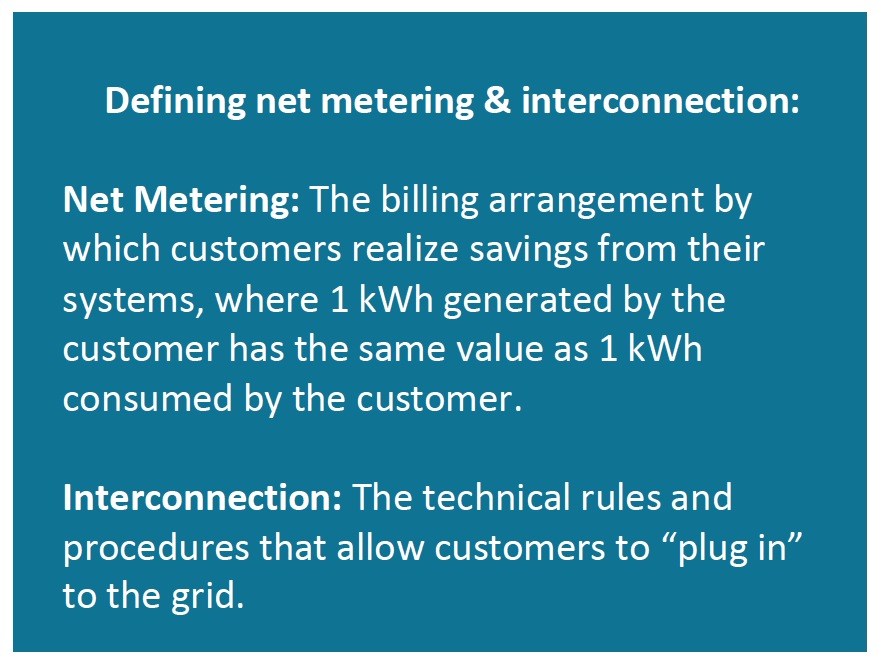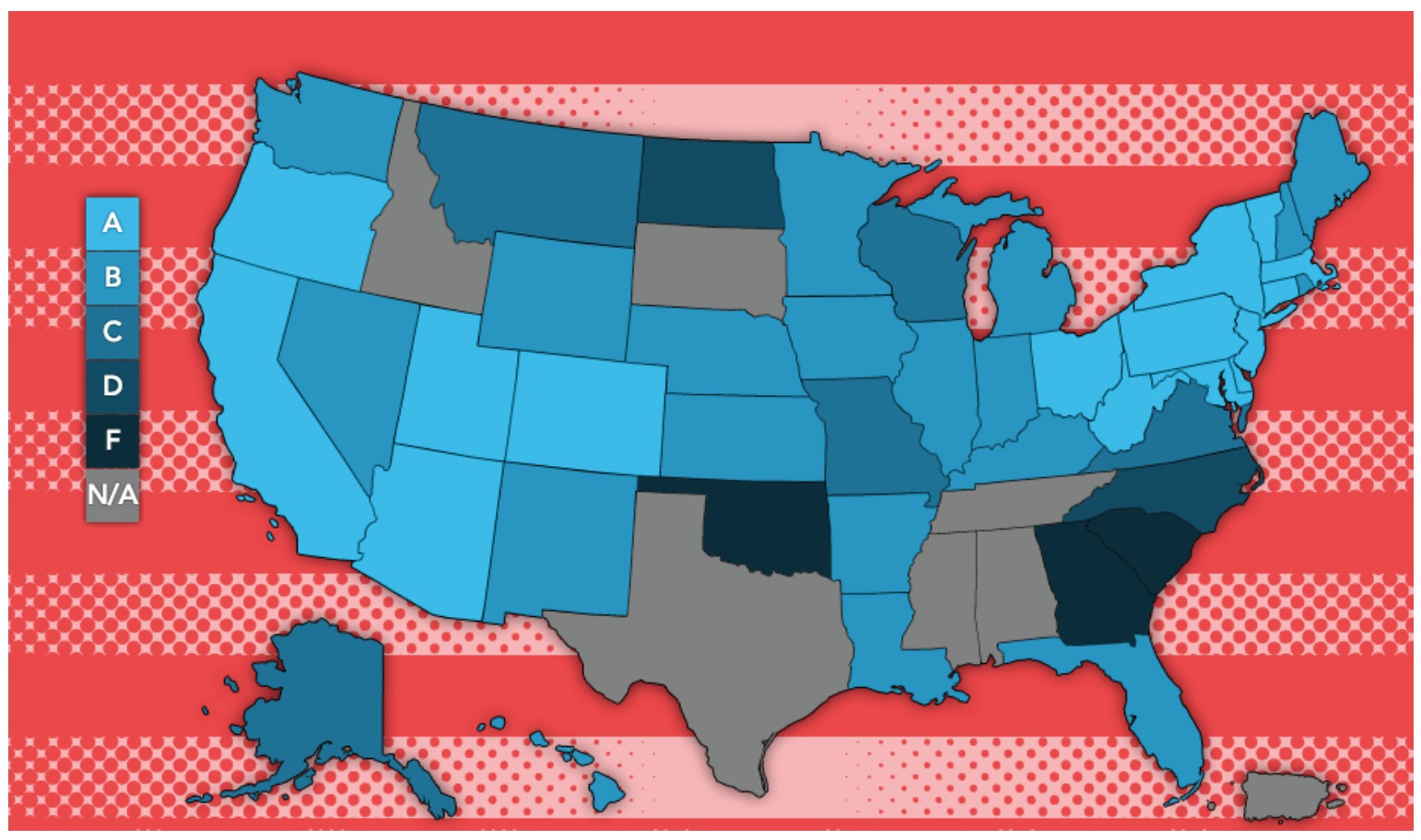INTERSTATE RENEWABLE ENERGY COUNCIL
VOTE SOLAR
Introduction to the 2014 Edition
Now in its eighth year of production, Freeing the Grid is a guide for improving state net metering and interconnection rules. The 2014 grades and resources center are both available in a highly interactive online format designed to make it easy to access, understand and share best practices and state progress on these foundational energy policies. Visit: www.freeingthegrid.org
Most states that have created and/or revised their interconnection and net metering policies have done so in pursuit of one or more of the same goals:
- To encourage greater renewable energy generation;
- To promote customer-sited Distributed Generation (DG);
- To help meet the goals of renewable portfolio standards (RPS);
- To reduce demand on an increasingly strained electric grid;
- To reward investment in renewable technologies;
- To facilitate energy self-reliance;
- To improve air quality and public health;
- To reduce greenhouse gas emissions; and
- To promote in-state economic development and create jobs.
A dozen states are in the vanguard of best practices; they go beyond merely enabling customer-sited DG by actively encouraging these clean energy systems.
Since the 1st Edition of Freeing the Grid, many more states have embraced standard best practices.
Across the board, the most successful states share certain policy components. Those seeking to achieve success have adopted substantially similar policies. The result is a clear, emerging consensus on best practices in many states, and a patchwork of ineffective and heterogeneous rules — or non-existent rules — in others.
 One significant lesson that is apparent upon reviewing the wide variety of existing state standards is that inconsistency is the nemesis of clean energy development. It creates confusion among consumers, undermines the ability of businesses to operate efficiently across utility service territories or state lines,
One significant lesson that is apparent upon reviewing the wide variety of existing state standards is that inconsistency is the nemesis of clean energy development. It creates confusion among consumers, undermines the ability of businesses to operate efficiently across utility service territories or state lines,
and increases costs to all program participants — utilities, consumers, businesses and commission staff — by forcing these stakeholders to master the idiosyncrasies of each individual state’s programs.
To have a chance to attain the goals listed above, successful interconnection and net metering policies must facilitate the installations of thousands of clean energy systems. It is entirely possible to stymie the development of renewable generation in an entire state by allowing one or more counterproductive provisions to be inserted into these policies during the development process.
In general, commonly accepted technical standards serve an extremely important purpose in the U.S. economy. By meeting a uniform set of procedures and electrical specifications, a wide variety of products and technologies can be developed at low cost by unleashing innovation and customer choice in the marketplace. Additionally, the use of one consistent engineering standard ensures safe and practical daily application. Standards for net metering and interconnection produce similar results for the renewables industry.
Many states—as well as the Federal Energy Regulatory Commission (FERC)—are approaching a consensus on just this type of standard for interconnection. (The FERC standards and agreements for interconnection were adopted in 2005 and updated in 2013 by FERC Order 792, hereafter referred to as the “FERC Standards.”
The vast majority of state and federal interconnection procedures are based on consensus safety and engineering standards from the IEEE and Underwriters Laboratories (UL). It is important to note that utility interests have had strong, expert representation throughout state and federal proceedings. The standards relevant to this report reflect technical provisions that have been negotiated and agreed upon with substantial utility input, thus obviating the need to renegotiate these provisions on a state-by-state basis. Indeed, the intended purpose of the robust standards development process is to benefit state decision-makers, regulators and utilities by saving them time and energy, while also preventing a patchwork of approaches and inconsistencies that impair market growth.
Designing economically sustainable renewable energy markets requires the coordination of complementary policy and regulatory mechanisms. While financial incentives are the engine of market development, interconnection and net metering policies are the road. It is much easier for a market to accelerate on the smooth, finished roads of Colorado, New Jersey and California, for example.
For three decades, states have served as the proving grounds for determining what works for connecting renewable energy to the grid. The best practices have emerged and are, once again, reflected in the latest edition of Freeing the Grid.
About the Interstate Renewable Energy Council
www.irec-usa.org
Today, IREC is a nationally recognized thought leader, stakeholder coordinator, expert resource and facilitator of regulatory reform. Our work expands consumer access to clean energy; generates information and objective analysis grounded in best practices and standards; and leads national efforts to build a quality-trained clean energy workforce, including a unique credentialing program for training programs and instructors.
About Vote Solar
votesolar.org
Vote Solar is a non-profit grassroots organization working to fight climate change and foster economic opportunity by bringing solar energy into the mainstream. Since 2002, Vote Solar has engaged in state, local and federal advocacy campaigns to remove regulatory barriers and implement key policies needed to bring solar to scale. We have staff in California, Colorado, Florida, Massachusetts, New York, and Pennsylvania.
Tags: Grid, Interstate Renewable Energy Council, IREC, Solar Energy, Vote Solar







 RSS Feed
RSS Feed